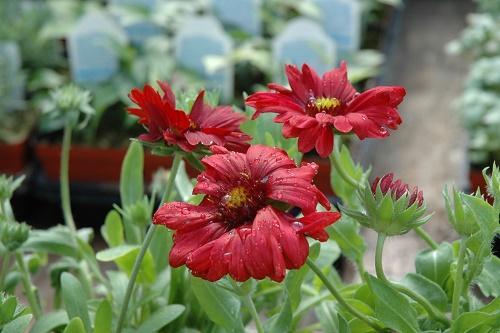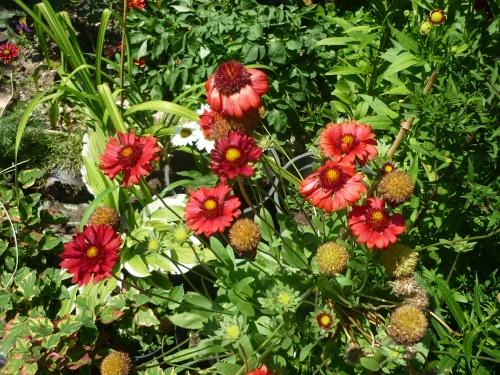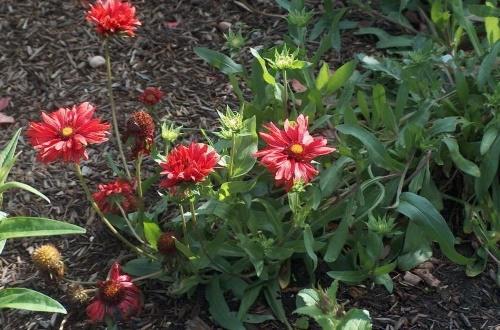Gaillardia Burgundy: adorable red daisies for your garden
 There is one charming plant in the Aster family, which is in great demand among flower growers. This is Gaillardia Burgundy - a beautiful bush with a lush rosette of bright leaves and large chic inflorescences. It looks great in curbs and on alpine slides, good in single planting and in group composition. Abundant and long flowering makes Gaillardia the mistress of the flower bed. All summer she decorates the site with large chamomile flowers swaying in the wind.
There is one charming plant in the Aster family, which is in great demand among flower growers. This is Gaillardia Burgundy - a beautiful bush with a lush rosette of bright leaves and large chic inflorescences. It looks great in curbs and on alpine slides, good in single planting and in group composition. Abundant and long flowering makes Gaillardia the mistress of the flower bed. All summer she decorates the site with large chamomile flowers swaying in the wind.
Characteristic features of the flower

In early June, tall single peduncles, also pubescent, begin to appear above the deciduous rosette. Their tops are decorated with large baskets up to 8 cm in diameter, similar to daisies. The middle of the flower is purple, sometimes with a yellow spot in the center. The petals themselves are of a rich wine-red color, with a small, barely noticeable, yellow speck on the tips.
The bush blooms all summer, until the first frost. In place of faded baskets, fluffy balls with seeds are formed. They also look decorative and are often used when drawing up ikebana.
Gaillardia Burgundy: growing requirements
 Red chamomile prefers sunny flower beds, where it can reveal the beauty of its bloom in full force. It will grow better on light and nutritious soil.
Red chamomile prefers sunny flower beds, where it can reveal the beauty of its bloom in full force. It will grow better on light and nutritious soil.
The easiest way to grow perennial Gaillardia is by seed. This can be done in several ways:
- Sowing seeds for seedlings in the month of March. Transplanting bushes to a flower bed should be carried out in early May.
- By planting the seeds immediately in open ground in the spring or before winter.
It is enough to sow once - and Gaillardia will settle in the garden forever. It reproduces well by self-seeding, forming new bushes every year.
In leaving, Burgundy, like other types of Gaillardia, is not at all demanding. It tolerates drought well, but if there is no rain in the hot summer, it is better to periodically water the bushes. So they will be able to continue their flowering, forming new buds, until autumn. As the flowering proceeds, the inflorescences should be cut so that they do not spoil the spectacular appearance of the blooming curtain. Given the height of the bush, Burgundy needs to be tied up.
On fertile soil, a flower can grow for the first time without additional fertilizing. In general, it is advisable to fertilize the plant three times per season:
- when buds are formed;
- during the period of mass flowering;
- a month before the end of flowering (you can navigate by frost).
Mineral complexes are suitable for feeding. You can also use compostbut not fresh manure.
In one place Gaillardia grows up to 5 years, after which the bush needs to be planted. If this is not done, flowering will become scarce, and the bush itself will take on a sloppy look.
Plants hibernate well, but young bushes in the central strip are best sprinkled with fallen leaves for the winter.Sometimes in Gaillardia, the curtains can partially freeze, but mostly old leaves disappear. In the spring, chamomile regains its former size and builds up a dense rosette.